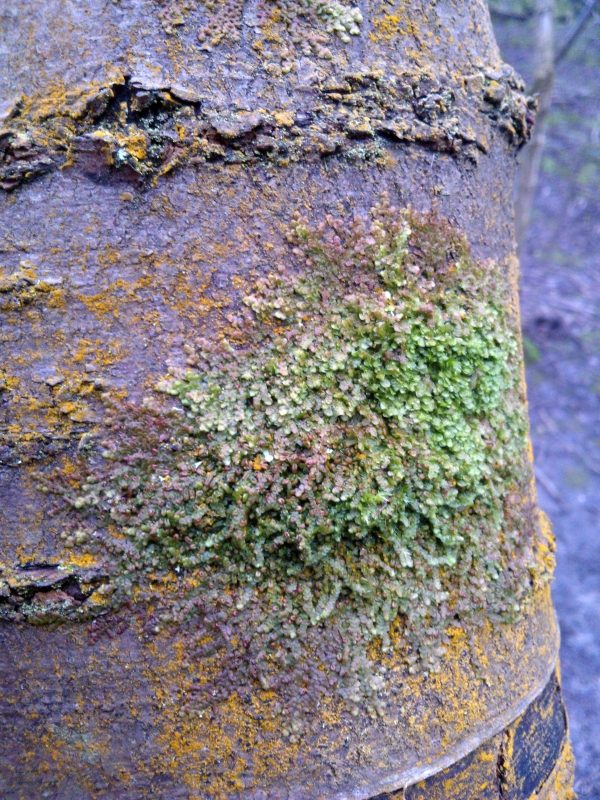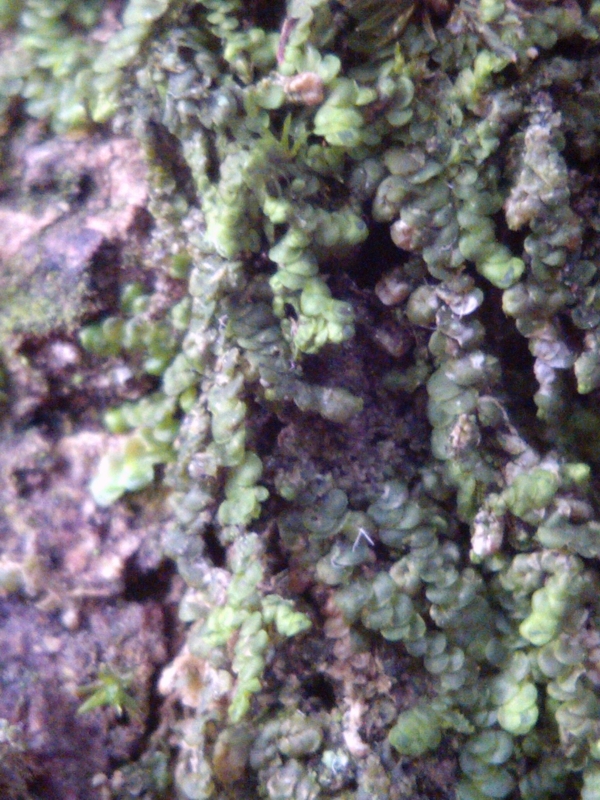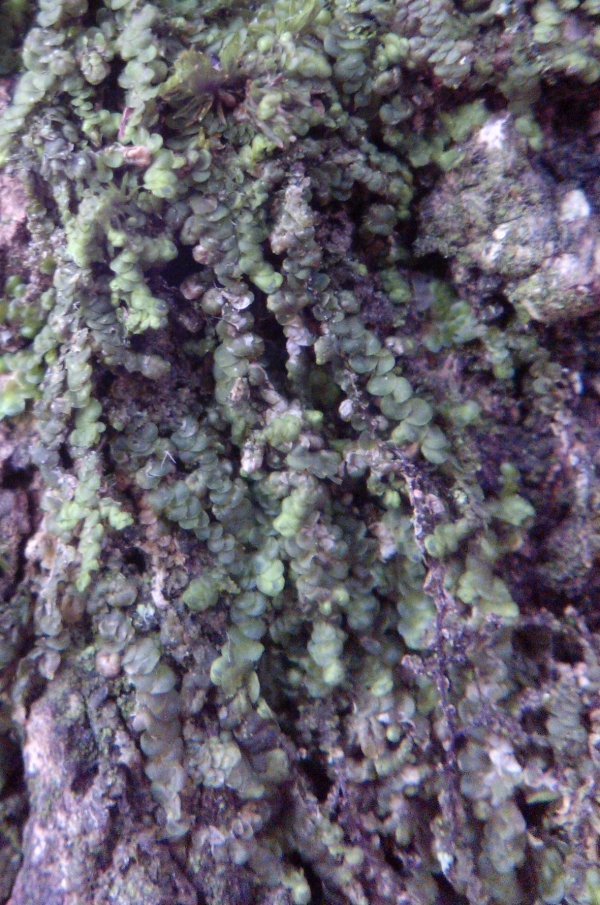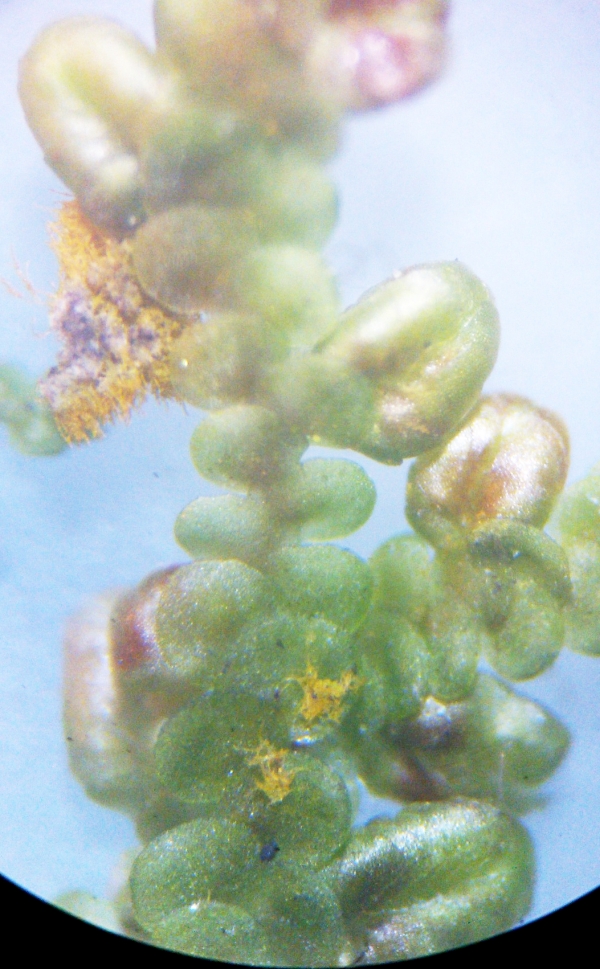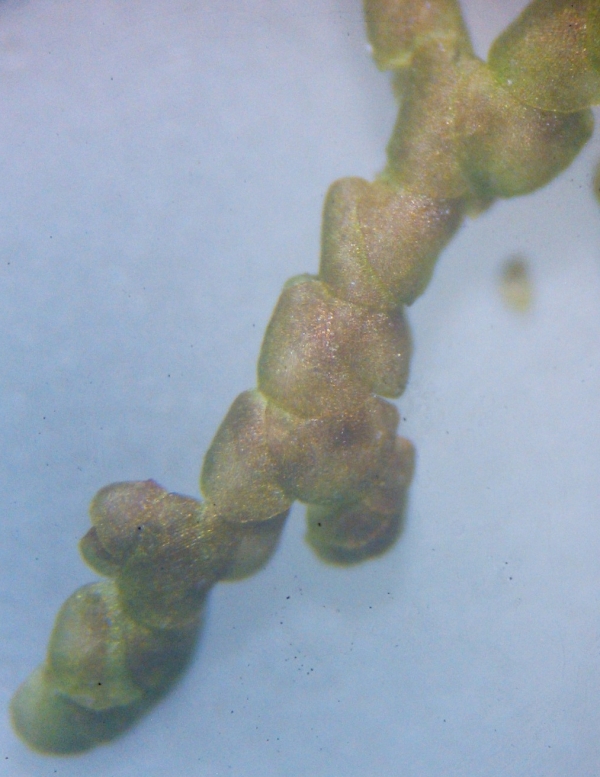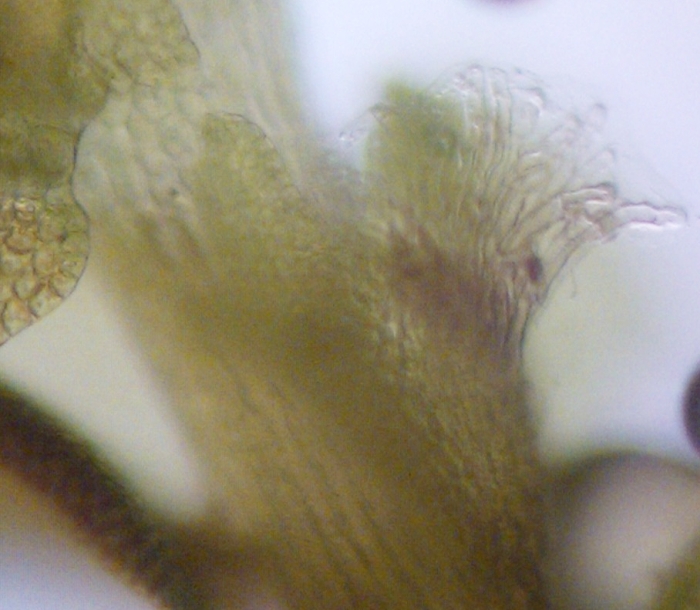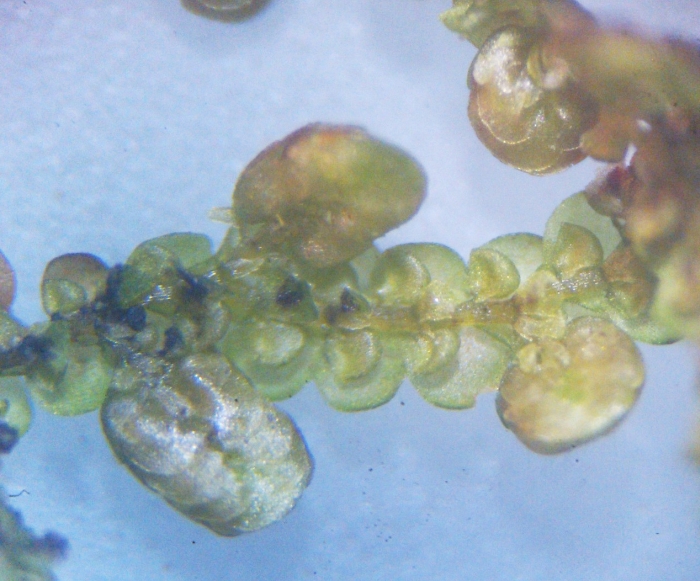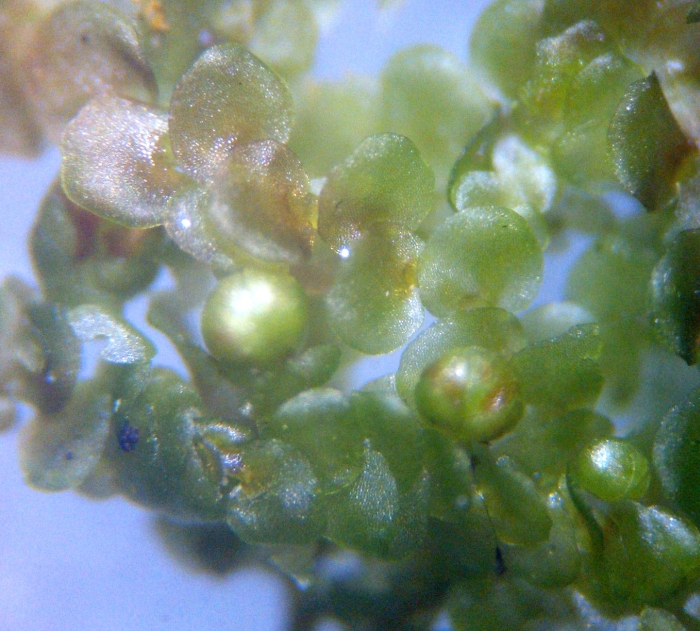Leafy
Liverworts - Frullania
Above: a colony of the leafy liverwort (Jungermanniale) Frullania (Scalewort) growing as an epiphyte on a Cherry (Prunus) tree. Note the fine leafy stems creeping over the substrate. A closer examination reveals this to be Frullania dilatata, the Dilated Scalewort. This bryophyte grows on the bark of trees and shrubs in well-lit areas and also on other substrates. Also present is the yellow-orange filamentous alga Trentepohlia.
Above and below: growing on the bark of an Acer.
Below: A close-up view
Above and below: leafy liverwort shoots consist of rows of leaves along a central stem. Tiny root-like rhizoids may anchor the shoots to the substrate. The arrangement of the leaves is incubous, meaning that each leaf slighty overlaps the base of the leaf in front of it (i.e. further towards the shoot apex which is topmost in the picture above and bottom-most in the picture below). Note the developing side-branches which begin as compressed shoots before elongating. The shoots are only about 1 mm (0.7 to 1.5 mm) in diameter.
Leafy liverworts tend to have three rows of leaves (though one may be lost) but the prostrate habit has resulted in degeneration of the leaves underneath the stem. These leaves, no longer in an optimum position for photosynthesis have become reduced to scale-like leaves called amphigasters, allowing the stem to press more closely to the substrate. Below:side-view of part of the stem showing a group of rhizoids. The rhizoids are actually borne on the amphigasters.
The leaves of leafy liverworts are bilobed (divided into two lobes) in most forms. In Frullania, one of these lobes (or lobules) can be seen tucked underneath the main lobes of each leaf and is modified into a helmet-shaped pitcher. These modified pitcher-like lobules are cup-shaped, with the mouth of the cup directed backwards, that is towards the base of the shoot. Most of the shoots grow predominantly down the tree's stem, such that the mouths of most of the cups are pointing upwards.
Above: a shoot viewed from beneath, showing the pitcher or cup-like lobules. It has been suggested that these lobules serve to retain water. Certainly moisture can be present intermittently on tree bark and it is important to take advantage of water when it does run down the trunk. However, observations have shown that water leaves (by capillary action) as easily as it enters the cups, so upon drying the cups do not retain water. On the other hand, the cups are reported to often contain small invertebrates, particularly rotifers and tardigrades. For instance, an illustration in Hyman (1951: The Invertebrates, vol. 3, p. 109, McGraw-Hill) shows the rotifer Mniobia symbiotica living in the cups, with 1 or 2 individuals in most cups with their food-gathering trochal disks protruding. The rotifer has a well developed adhesive disc and pedal glands in its tail end to attach it to the inner wall of the cup.
It is suggested that waste products and dead remains of these rotifers may supply the liverwort with much needed nutrients, such as nitrogen and phosphorus. Tree bark can be nutrient-poor compared to a soil substrate and liverworts possessing these cups are often found growing as epiphytes on woody plants.
Above: a diagrammatic underview of a shoot of Frullania dilatata.
Note the bunch of rhizoids on one of the reduced amphigaster leaves. The
amphigasters are bilobed. A narrow stalk attaches each pitcher to the
stem and leaf. each pitcher-stalk also has a small leaf-like projection
on it: the spur.
Below:close-up of a lobule pitcher. This plant has been immersed in water for microscopy and the pitchers have trapped bubbles of air within them (the plant is also generating its own bubbles through photosynthesis). These pitchers are at least as broad as they are long, which is diagnostic of Frullania dilatata (other species of Frullania have more elongated pitchers).
Below:a close-up of cells making up the main lobe of a leaf. The blade of the leaf consists of a single layer of cells. the granules are starch granules.
Below:growing shoot tips. Fertile female shoots will eventually terminate in a perianth: a tubular arrangement of leaves enclosing the female reproductive organs (archegonia). In Frullania dilatata this perianth consists of modified and characteristically warty leaves. This liverwort is dioicous, which means that the male reproductive organs (antheridia) are on separate (gametophyte) plants to the female organs (archegonia). (Note the spelling: in flowering plants dioecious species have male and female flowers on separate (sporophyte) plants; these different spellings are usually retained though dioecious can be used in both cases as it has a more general meaning).
More Liverwort
Epiphytes - Metzgeria
Article created: 8 Feb 2021
Updated 23 June 2022 (two photos of Metzgeria mislabeled by accident have been replaced with the correct photos of Frullania)
